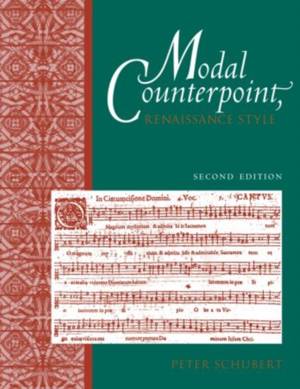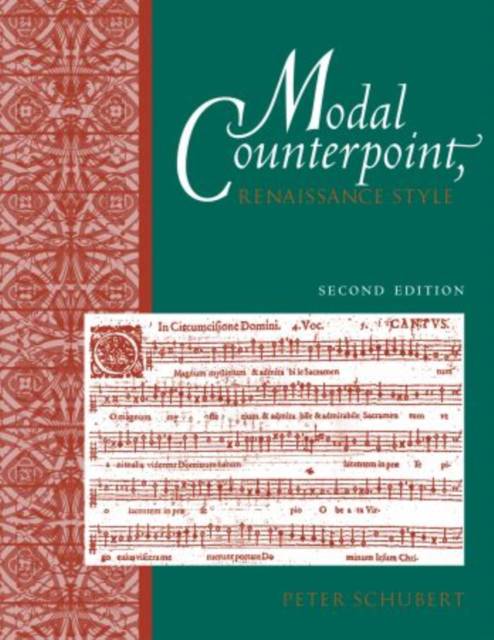
- Afhalen na 1 uur in een winkel met voorraad
- Gratis thuislevering in België vanaf € 30
- Ruim aanbod met 7 miljoen producten
- Afhalen na 1 uur in een winkel met voorraad
- Gratis thuislevering in België vanaf € 30
- Ruim aanbod met 7 miljoen producten
Zoeken
€ 179,95
+ 359 punten
Omschrijving
An exceptional text for undergraduate and graduate music students, Modal Counterpoint, Renaissance Style uses a wide variety of carefully graded exercises to present guidelines for writing and analyzing 16th-century music. The only species counterpoint text that draws directly on Renaissance treatises, it provides a conceptual framework to guide students through composition and analysis as it teaches them general structural principles. With stylistically diverse examples including not only motets and mass movements but also French chansons, German chorale settings, English canzonets, Italian madrigals, and Spanish organ hymns, villancicos, and ricercars, the book gives students a "real-life" feel for the subject. It distinguishes between technical requirements ("hard" rules) and stylistic guidelines ("soft" rules), and includes coordinated exercises that allow students to develop their skills systematically. The concluding chapters provide the formal and conceptual building blocks for longer pieces and encourage students to understand analysis and composition as complementary activities. By the end of the book, students are writing real compositions, not just drill exercises. The text also features progressively graded exercises, historical asides that explain important topics and issues of the period, and some notes in the preface on using the book in the classroom. Combining the historical accuracy of "style-oriented" texts with the more systematic species counterpoint approach, this book offers a unique alternative to other methods.
Now in its second edition, Modal Counterpoint, Renaissance Style integrates improvisation activities and new repertoire examples into many chapters; revises the chapter on three-part writing (Chapter 14) so that it pays more attention to rules and strategies; reworks the chapters on cadences (Chapter 10) and on writing two parts in mixed values (Chapter 11) to make them more accessible to students; incorporates clarified instructions throughout; and includes a summary of rules.
Now in its second edition, Modal Counterpoint, Renaissance Style integrates improvisation activities and new repertoire examples into many chapters; revises the chapter on three-part writing (Chapter 14) so that it pays more attention to rules and strategies; reworks the chapters on cadences (Chapter 10) and on writing two parts in mixed values (Chapter 11) to make them more accessible to students; incorporates clarified instructions throughout; and includes a summary of rules.
Specificaties
Betrokkenen
- Auteur(s):
- Uitgeverij:
Inhoud
- Aantal bladzijden:
- 372
- Taal:
- Engels
Eigenschappen
- Productcode (EAN):
- 9780195331943
- Verschijningsdatum:
- 18/12/2007
- Uitvoering:
- Met spiraalrug
- Afmetingen:
- 229 mm x 277 mm
- Gewicht:
- 839 g

Alleen bij Standaard Boekhandel
+ 359 punten op je klantenkaart van Standaard Boekhandel
Beoordelingen
We publiceren alleen reviews die voldoen aan de voorwaarden voor reviews. Bekijk onze voorwaarden voor reviews.











